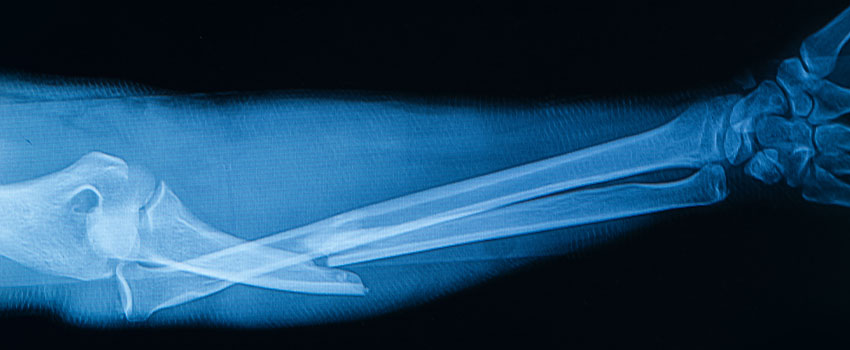
Fractures and bone breaks are some of the most common reasons people end up in urgent cares and at the doctor’s office. Not only are they typically extremely painful to experience, but they require immediate medical care so they won’t get worse.
Read on to learn more about fractures from our AFC Urgent Care Farragut team!
What Exactly Is a Fracture?
A fracture, often known as a “broken bone,” happens when a bone entirely or partially splits. Accidents, slips, falls and sports-related injuries commonly cause these injuries, but weakening bone disorders like osteoporosis and low bone density can also cause them in more rare cases.
Out of the many various forms of bone fractures that exist, we’ve included some of the most common ones below.
Types of Fractures
- Closed or open fractures: If the injury doesn’t open the skin, it’s called a closed fracture. If the skin does open, it’s called an open fracture or, perhaps more commonly, a compound fracture.
- Complete fractures: The break goes completely through the bone, separating it in two.
- Partial fractures: The break doesn’t go all the way through the bone.
- Stress (hairline) fractures: The bone gets a crack in it, which is sometimes tough to find with imaging.
Will a Small Fracture Stay Small?
If it’s treated quickly and correctly, yes, it will. However, even though bones have an amazing ability to grow back and heal quickly, if a fracture isn’t treated in a timely manner, it can get worse. This is especially common with stress or hairline fractures, as they can result in a complete fracture if they continue to endure too much stress and activity.
Bones typically heal in around six to eight weeks, depending on the severity of the fracture. If you have been experiencing pain and aren’t sure whether you’re dealing with a fracture, visit our AFC center to get one of the tests we’ve mentioned below.
Tests that Diagnose Fractures
- X-rays: This is the most common way to diagnose a fracture, as this tool produces a two-dimensional picture of the break.
- Bone scan: This type of test is used to find fractures that don’t show up on an X-ray. This scan takes longer—usually two visits four hours apart—but it can help find some fractures.
- CT scan: A CT scan uses computers and X-rays to create detailed slices or cross-sections of the bone.
- MRI: This type of test is most often used to diagnose muscle and tissue-related injuries, but it can also diagnose a stress fracture.
Dealing with a broken bone and aren’t sure what to do next? We provide quality non-emergency care at our AFC center, so don’t hesitate to visit us!


